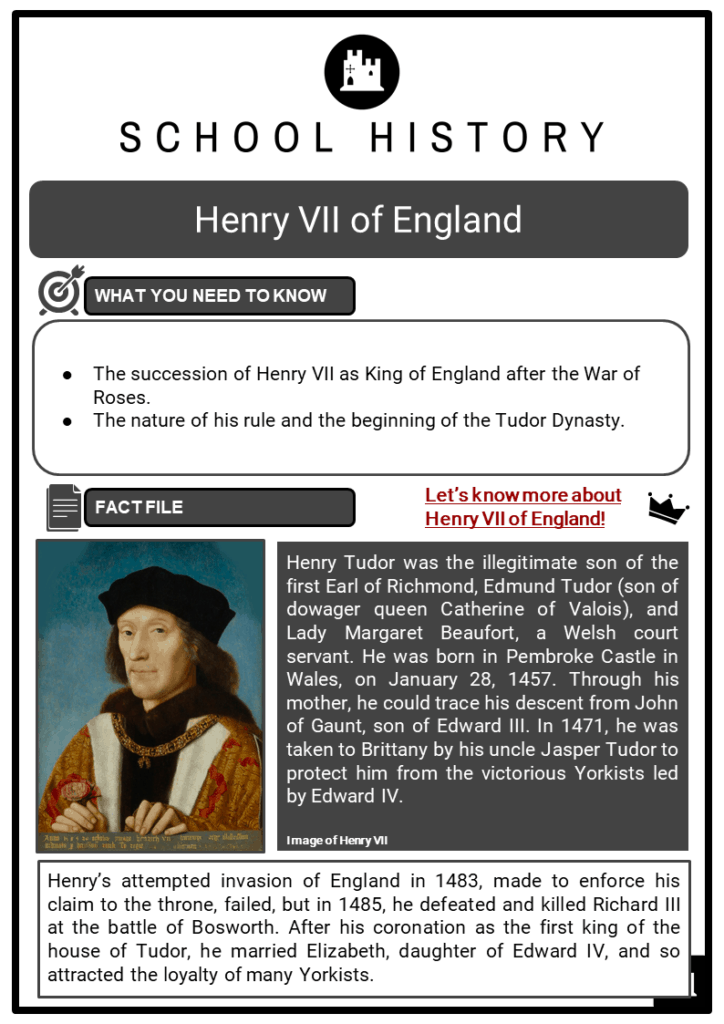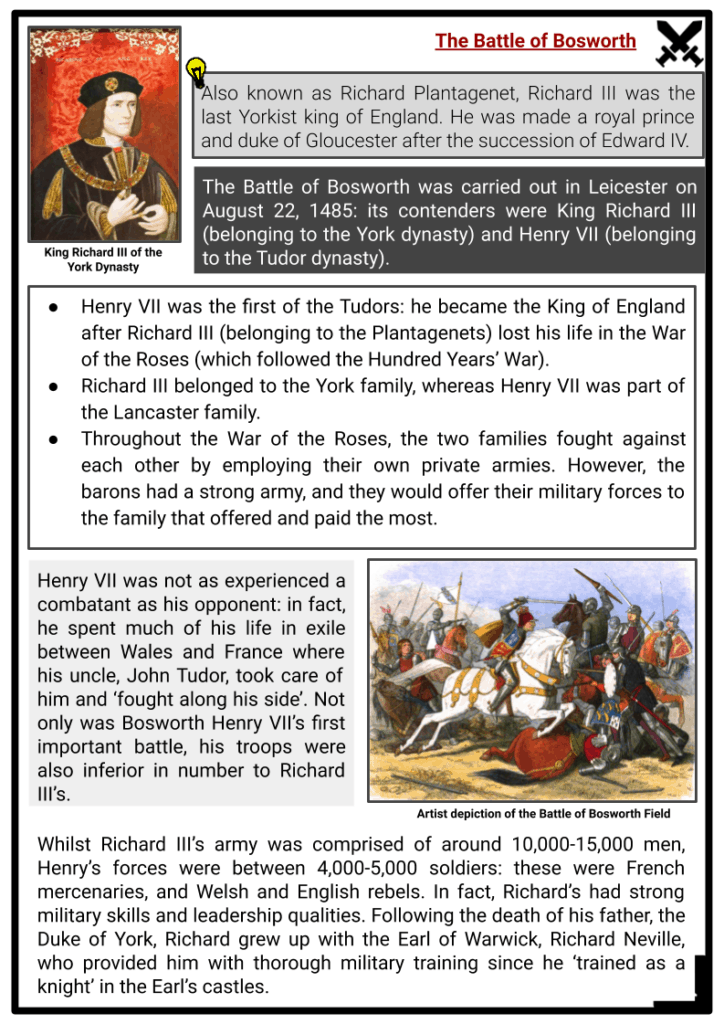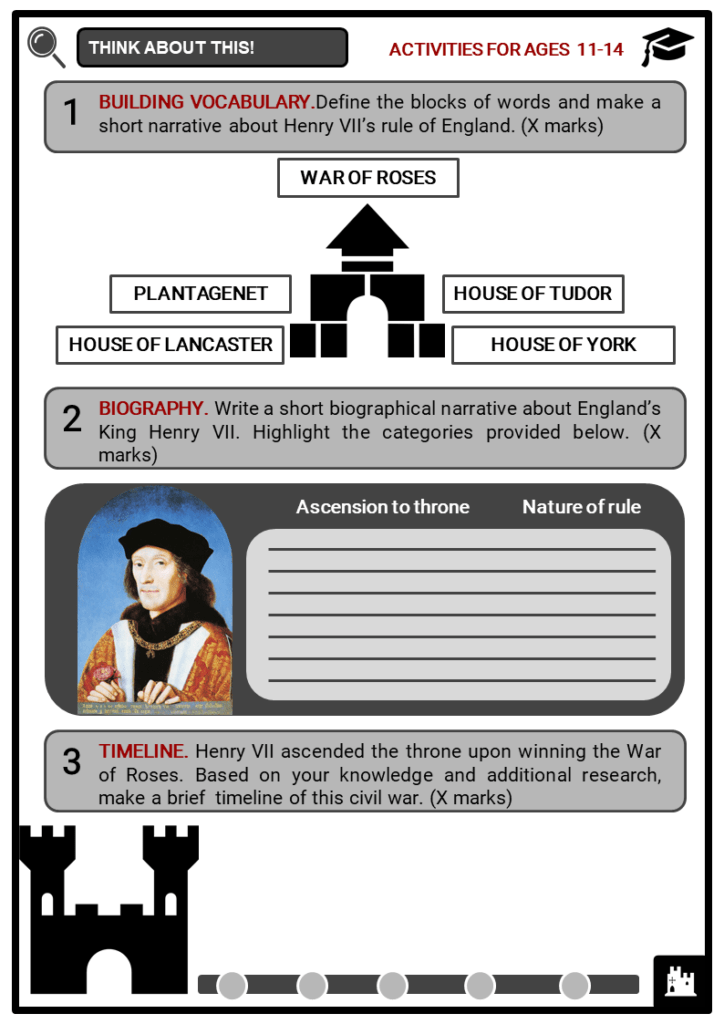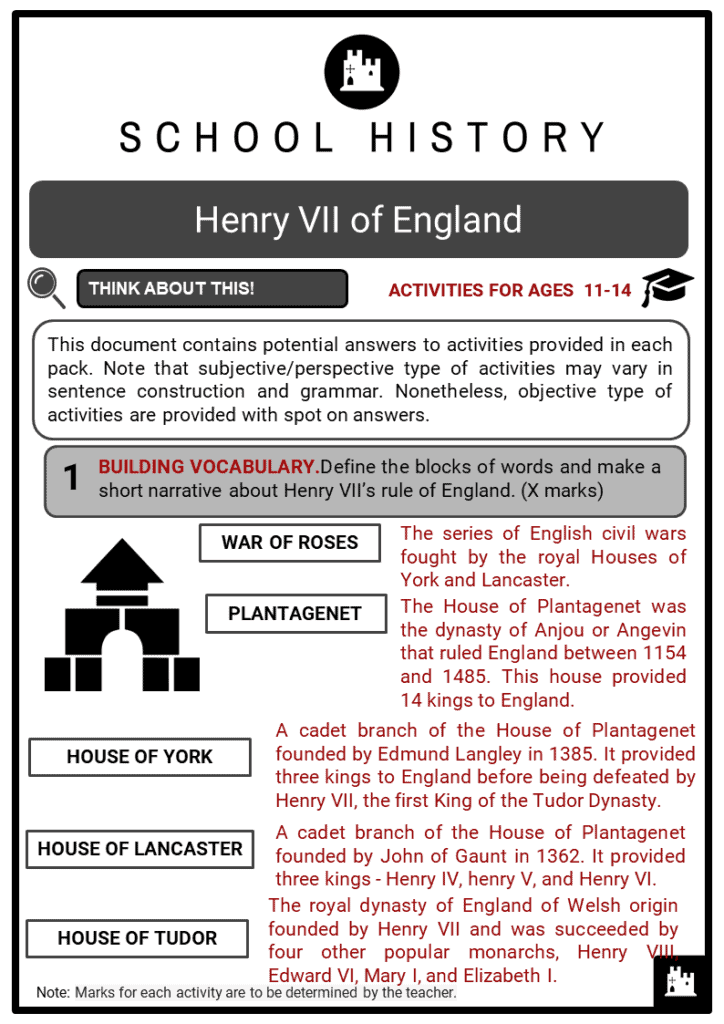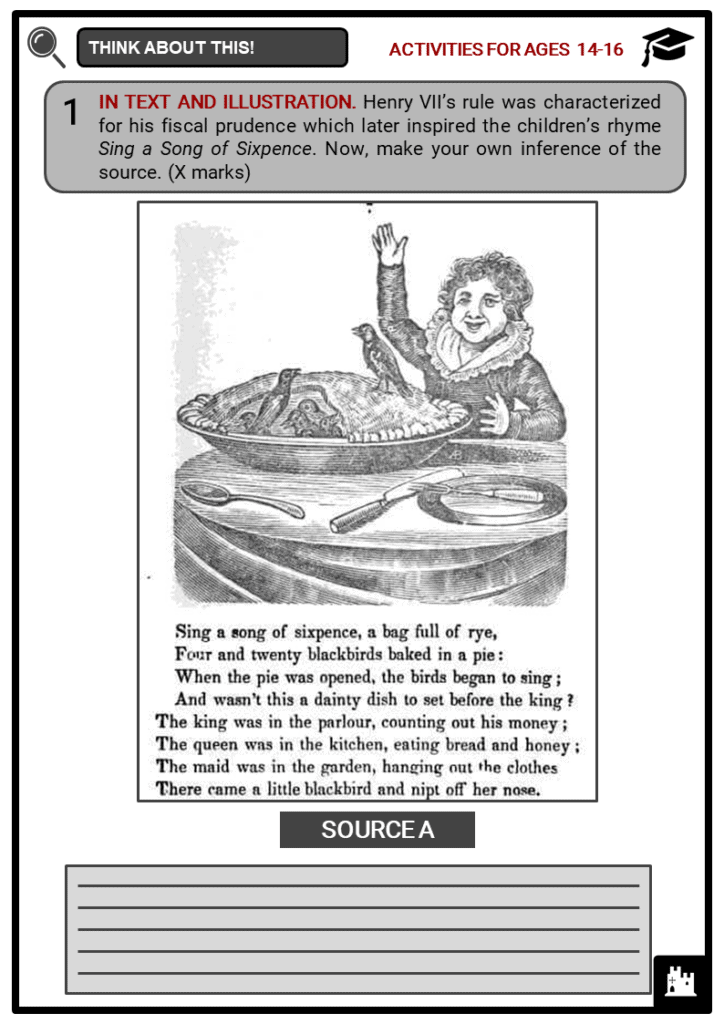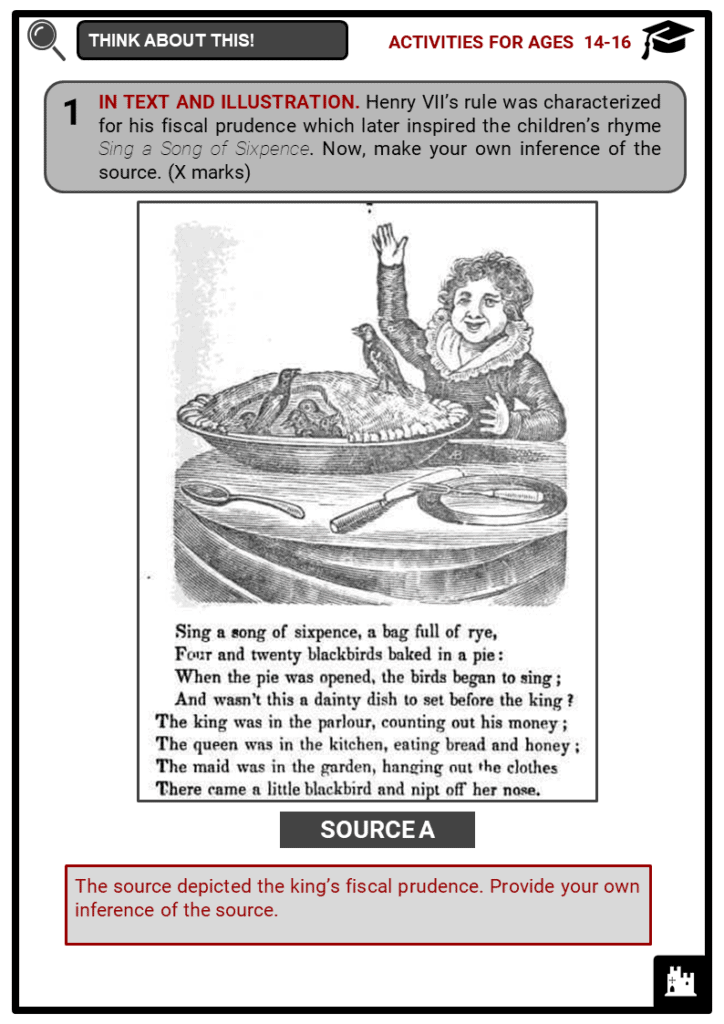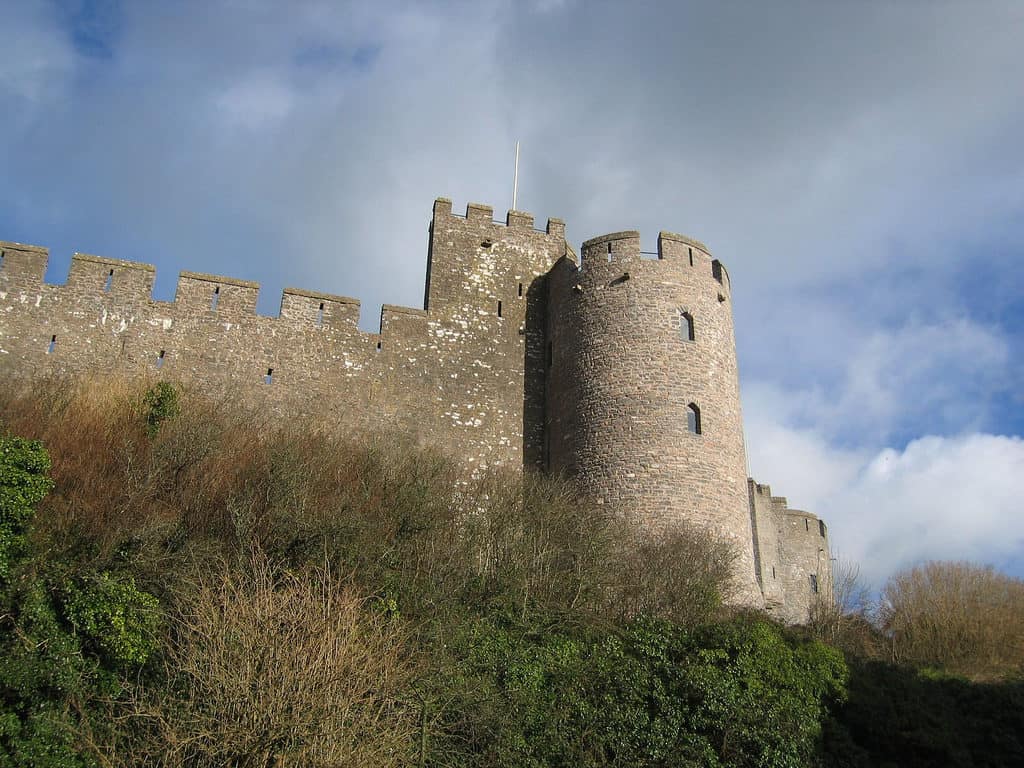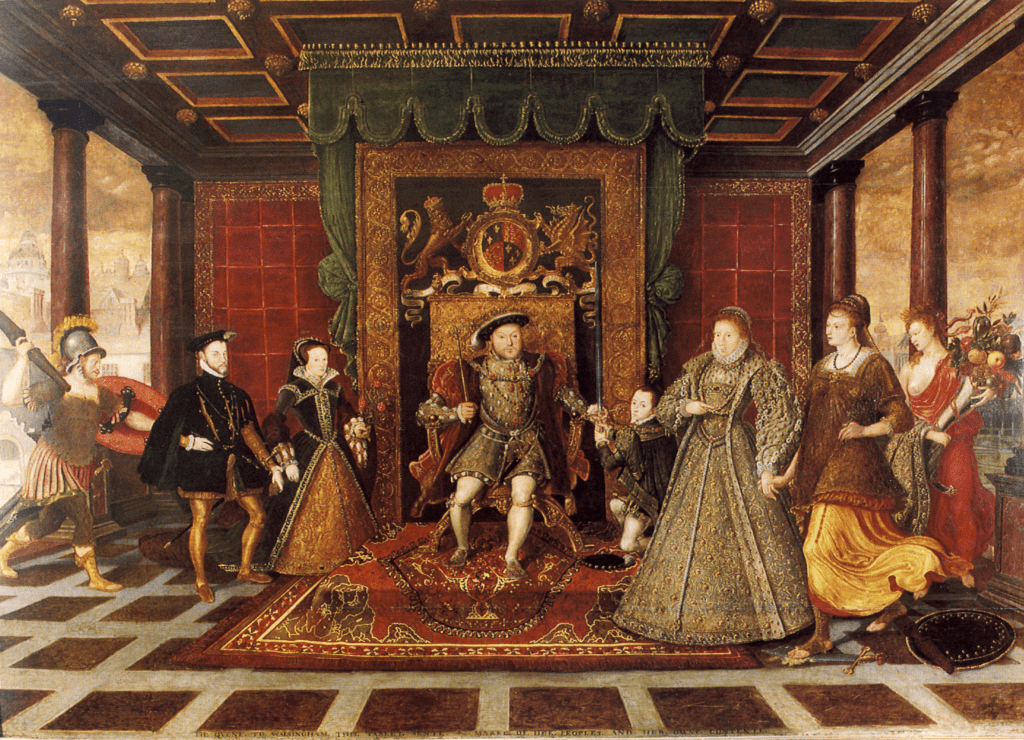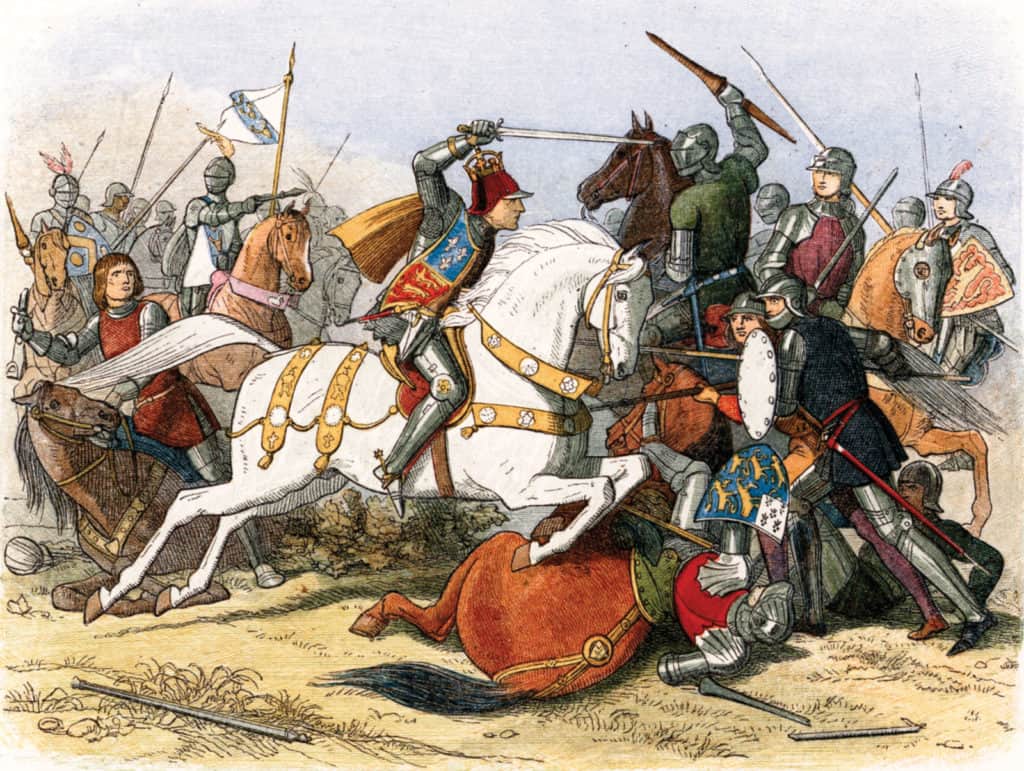Download Henry VII of England Worksheets
Do you want to save dozens of hours in time? Get your evenings and weekends back? Be able to teach Henry VII of England to your students?
Our worksheet bundle includes a fact file and printable worksheets and student activities. Perfect for both the classroom and homeschooling!
Table of Contents
Add a header to begin generating the table of contents
Summary
- The succession of Henry VII as King of England after the War of Roses.
- The nature of his rule and the beginning of the Tudor Dynasty.
Key Facts And Information
Let’s know more about Henry VII of England!
- Henry Tudor was the illegitimate son of the first Earl of Richmond, Edmund Tudor (son of dowager queen Catherine of Valois), and Lady Margaret Beaufort, a Welsh court servant. He was born in Pembroke Castle in Wales, on January 28, 1457. Through his mother, he could trace his descent from John of Gaunt, son of Edward III. In 1471, he was taken to Brittany by his uncle Jasper Tudor to protect him from the victorious Yorkists led by Edward IV.
- Henry’s attempted invasion of England in 1483, made to enforce his claim to the throne, failed, but in 1485, he defeated and killed Richard III at the battle of Bosworth. After his coronation as the first king of the house of Tudor, he married Elizabeth, daughter of Edward IV, and so attracted the loyalty of many Yorkists.
The Battle of Bosworth
- Also known as Richard Plantagenet, Richard III was the last Yorkist king of England. He was made a royal prince and duke of Gloucester after the succession of Edward IV.
- The Battle of Bosworth was carried out in Leicester on August 22, 1485: its contenders were King Richard III (belonging to the York dynasty) and Henry VII (belonging to the Tudor dynasty).
- Henry VII was the first of the Tudors: he became the King of England after Richard III (belonging to the Plantagenets) lost his life in the War of the Roses (also known as the hundred year war).
- Richard III belonged to the York family, whereas Henry VII was part of the Lancaster family.
- Throughout the War of the Roses, the two families fought against each other by employing their own private armies. However, the barons had a strong army, and they would offer their military forces to the family that offered and paid the most.
- Henry VII was not as experienced a combatant as his opponent: in fact, he spent much of his life in exile between Wales and France where his uncle, John Tudor, took care of him and ‘fought along his side’. Not only was Bosworth Henry VII’s first important battle, his troops were also inferior in number to Richard III’s.
- Whilst Richard III’s army was comprised of around 10,000-15,000 men, Henry’s forces were between 4,000-5,000 soldiers: these were French mercenaries, and Welsh and English rebels. In fact, Richard’s had strong military skills and leadership qualities. Following the death of his father, the Duke of York, Richard grew up with the Earl of Warwick, Richard Neville, who provided him with thorough military training since he ‘trained as a knight’ in the Earl’s castles.
- Henry VII’s first attempt to dethrone Richard III was not successful and were easily ‘put down’ because of the stormy weather in the West Country.
- However, the fate of the battle radically changed when Sir William Stanley and Sir Thomas Stanley supported Henry. In fact, since Thomas Stanley’s son was held hostage by Richard III, he sided with Henry VII by engaging his private army of six-thousand people.
- His man force was composed of ‘infantry carrying spears and billhooks’, as well as archers. On the other hand, Richard did not have much support from nobles and dukes. The Earl of Northumberland refused to engage his forces in the battle against Henry.
- At the end of the battle, as soon as Richard III’s crown was found on the ground of the battlefield by Lord Stanley, Henry VII was crowned. Thanks to his support, Sir Thomas Stanley was ensured the Earldom of Derby as soon as Henry was proclaimed king.
- At the end of the battle, Richard III’s army endured a loss of one thousand men (including Richard himself), whereas Henry’s army saw the death of two-hundred men.
Henry VII’s rule of England
- During the reign of Henry VII, England was a Catholic nation, and also his son Henry VIII, continued along his father’s Catholic footsteps
- Henry VIII would be responsible for the Reformation in England, yet he detested Protestantism, and had strong Catholic values.
- The king was above all interested in the Church’s wealth, and regarded it as a ‘source of revenue’. Henry VII also transferred several bishops from one dioceses to another ‘not [because] he had strong and shifting views as to which churchman should serve which diocese, but that the royal prerogative included ‘regalian rights’ over Church property’.
- As a consequence, the king would receive revenues during episcopal vacancies. Although the king took advantage of the Church as a source of income, his faith should not be underestimated. Henry was devoted to the Observant Franciscans.
- The king founded two Observant Franciscan houses: one in Greenwich (1482), and one in Richmond (1500). Moreover, he encouraged already existing Franciscan orders to ‘adopt the Observant lifestyle’. In his will, he stated that at his death the Franciscan order would continue to receive cash donations.
- The king was devout to the saints and partook in the ‘traditional pity’ of the Catholic religion. However, one of the greatest acts of devotion to God was the creation of ‘a magnificent chantry chapel’ in Westminster Abbey.
- Henry VII also financed the construction of the Savoy Hospital in order to help the poor people in London.
- Throughout his reign, Henry avoided wars and pursued a peaceful foreign policy. In fact, in 1494, when Europe was alarmed by Charles VIII’s invasion of Italy, Henry VII maintained his neutrality (Encyclopedia of World Biography 2004).
- When Scotland invaded England the following year, Henry imposed a tax in order to cover the expenses of the army. Such a decision caused numerous riots and rebellions in Cornwall. However, the king assigned the military campaign against the Scots to the Earl of Surrey, Thomas Howard, who achieved successful results.
- Henry also negotiated his children’s marriages in order to form strategic alliances.
- He wed his daughter Margaret to the king of Scotland James IV, his intention was that of ending the ‘Auld Alliance’ between Scotland and France.
- He arranged the marriage between princess dowager Catherine of Aragon and his son, Henry VIII, the king wanted to strengthen the contacts and peace between England and Spain.
- Although Henry’s government was ‘medieval in its structure’, he nonetheless favoured investments in commerce and welcomed technological advancements in the construction of ships (the king also sponsored John Cabot’s expedition to America).
Henry VII’s Timeline
- In 1509, Henry VII died at the age of 52. He was succeeded by his son, Henry VIII.
- In the same year, Elizabeth of York died.
- In 1503, Margareth, Henry VII’s daughter married James IV of Scotland. The marriage resulted to future claims of Scotland to the English throne.
- The following year, Prince Arthur died. His brother, future Henry VIII, later married Catherine.
- In 1501, to strengthen alliances with Spain, Henry’s eldest son, Arthur married Catherine of Aragon.
- Funded by Henry VII, John Cabot sailed west from Bristol and discovered the Newfoundland for England. Cabot assumed it was Asia.
- Through the Treaty of Etaples, the English forces withdrew from France in 1491.
- The house of York and Lancaster united when Henry married Elizabeth of York in 1486.
- In 1485, Henry crowned himself as King of England after he defeated Richard III from the York dynasty at the Battle of Bosworth. The same battle ended the Wars of Roses.
- Henry VII began the English royal dynasty of the House of Tudor giving a total of five sovereigns to England.
The House of Tudor
- Sometimes referred to as the Virgin Queen, Elizabeth I, who led the Golden Age of England, was the last ruling monarch from the Tudor Dynasty began by Henry VII, his grandfather.
Image sources:
[1.] https://c2.staticflickr.com/4/3486/3716455379_29afc3e721_b.jpg
[3.] https://upload.wikimedia.org/wikipedia/commons/e/eb/James_Doyle%27s_Battle_of_Bosworth.jpg

